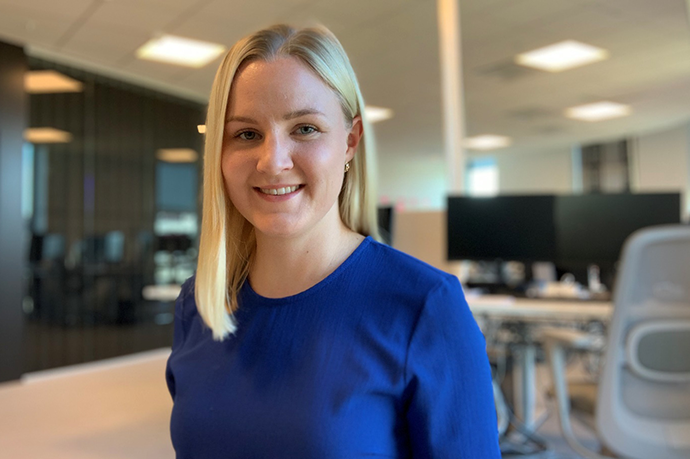A personal story from Amanda Nilsson
Amanda Nilsson is a 27-year old Deep Learning Engineer at ZENUITY and works in the Computer Vision Product Area, where she develops Deep Neural Networks for Object Detection. ZENUITY is developing the full Software stack for self-driving cars, which aims to reduce fatal car accidents caused by human error by 85%. If made real, this is estimated to save the lives of more than 50 000 people each year.
In this interview, Amanda shares her story about how she is changing the future of mobility and helping save lives with her daily work.
Why did you decide to become a Deep Learning Engineer?
- Something that has always intrigued me is finding clean and efficient solutions to different problems. When I first learned about deep learning there was something appealing with the idea that you can go from a randomized initial state to a system optimized for completing a certain task, just by learning from examples.
Besides, I’ve always wanted to work with something that has an impact on society and as a Deep Learning Engineer at ZENUITY I definitely fulfill that goal!
How does your day at ZENUITY look like?
- In my team, we have an end-to-end responsibility for developing vision-based object detection. Our work includes training, evaluating and deploying deep neural networks. The training and evaluation parts require large amounts of relevant, high-quality data. This is what I am currently working on, making annotated data available for training and evaluation.
How do you see the end-result of your work?
- The team’s efforts truly become visible when our neural network is deployed in the car. Seeing detections of vehicles and people being made in real time is really exciting, especially when you know how much work there is behind it.
What is the biggest challenge for a Deep Learning Engineer in in your teams?
- I would say proving that our functions are safe. The distance at which we can detect another vehicle or a pedestrian will determine the speed at which the car can drive. If the environment changes in a way that affects our ability to perceive other objects, we need to feedback this to the decision and control functions. This is a complex task in a complex environment, and one of the exciting challenges that we work with at ZENUITY!
What do you like the most about working at ZENUITY?
- It’s hard to name one thing above others. If it has to be one thing, it’s my colleagues and our way of working. We have a completely new business model, that concentrates on small, autonomous and cross-functional teams. The organization is very flat and my manager’s task is not to tell me what to do, but to remove any obstacles that I face, so that the team can perform our work in the best way.
There is a lot of room for bringing our own ideas and all teams are self-organized, meaning that we decide how to structure our work and what technology to use. I’ve never seen a company with this structure and freedom before, empowering all employees to fulfill their maximum potential!
Then of course I wouldn’t be working at ZENUITY if we weren’t solving interesting and challenging problems 😊
Fun facts about Amanda:
Hobbies: Apparently getting involved in way too many things… outside of work I’m part of the non-profit organization GAIA, promoting the data science and machine learning community in Gothenburg through meetups and a yearly conference.
Otherwise I like spending time outdoors, drinking craft-beer and currently I have 150+ hours in two months of playing Witcher III.
Watch our short-movie about our full SW-stack for self-driving cars
Connect with our recruitment team or apply for a job HERE.
